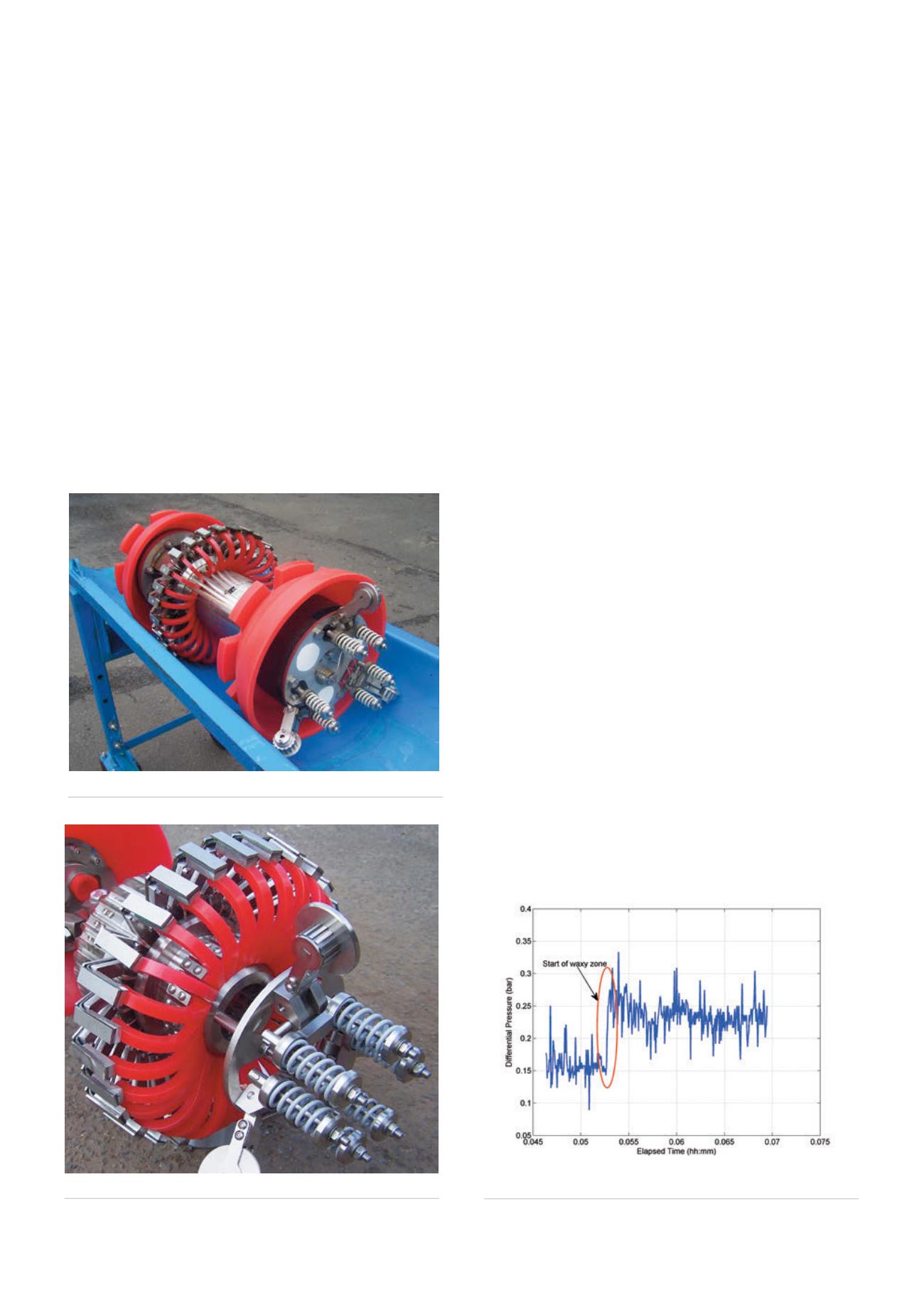
Running the programme
When it comes to running the progressive cleaning
operation, the pigging philosophy is the document
around which decisions should be made. The decision
tree should be used to determine whether or not the
next most aggressive tool should be run, or the same
level of aggression maintained. Decisions will be based
on run data in comparison to what was seen during any
testing, and levels of debris received and the impact of
this on the process. The pipeline pig supplier should be
available to review feedback and offer advice in line with
the decision tree process. It is quite common for pigging
companies, such as Pipeline Engineering, who offer this
level of product support for specific applications, to also
provide optional and additional pigging services including
the supply of site based engineers and field service teams
to assist with the progressive cleaning operations, and
offer advice based on first hand observations.
Pipeline cleanliness assessment
The aim of a cleaning campaign is usually to either
prepare the pipeline for an inline inspection or improve
the pipeline hydraulics. It is beneficial to confirm the
cleanliness of the pipeline to confirm either of these
objectives has been met. This is particularly important
prior to running an inline inspection tool as these tools
require a good contact between the sensors and the
metal pipe wall in order to work effectively. This in
turn requires a clean pipeline. There are considerable
costs associated with having to undertake a repeat ILI
tool run, therefore confirming the pipeline cleanliness
prior to running the intelligent tool is advantageous. It
is standard practice to run a pipeline pig equipped with
an aluminium gauge plate, but this is only capable of
confirming that there are no major restrictions to the
bore of the pipeline.
Traditionally, the decision of whether or not to run
the ILI tool is based on analysing the quantity of debris
returned from each pig run and making a judgement call
as to whether the line is clean enough to facilitate a
successful ILI tool run. This is often made more difficult
as many operators flush the receiver after pig receipt, so
the debris present when the trap is opened is not always
representative of what has been returned. Pigging based
inspection tools, such as Pipeline Engineering’s patented
PECAT™, that are specifically designed to assess the
cleanliness of pipelines are available. The sensor and data
logging capabilities of PECAT enables measurement of
location and quantity of debris in the line as well as other
parameters if required. Figures 4 and 5 show examples of
PECAT.
The main data that is logged with regard to debris
assessment comes from the pipe wall offset and rotation
sensors. Additional data that is logged to support
cleanliness assessment is the pig differential pressure,
acceleration, vibration and the ambient temperature. The
information reported can then be used to make a decision
Figure 6.
Typical differential pressure trace.
Figure 5.
PECAT™ sensor arms and odometer assemblies.
Figure 4.
PECAT™ – Pipeline Cleanliness Assessment Tool.
36
World Pipelines
/
JULY 2015


